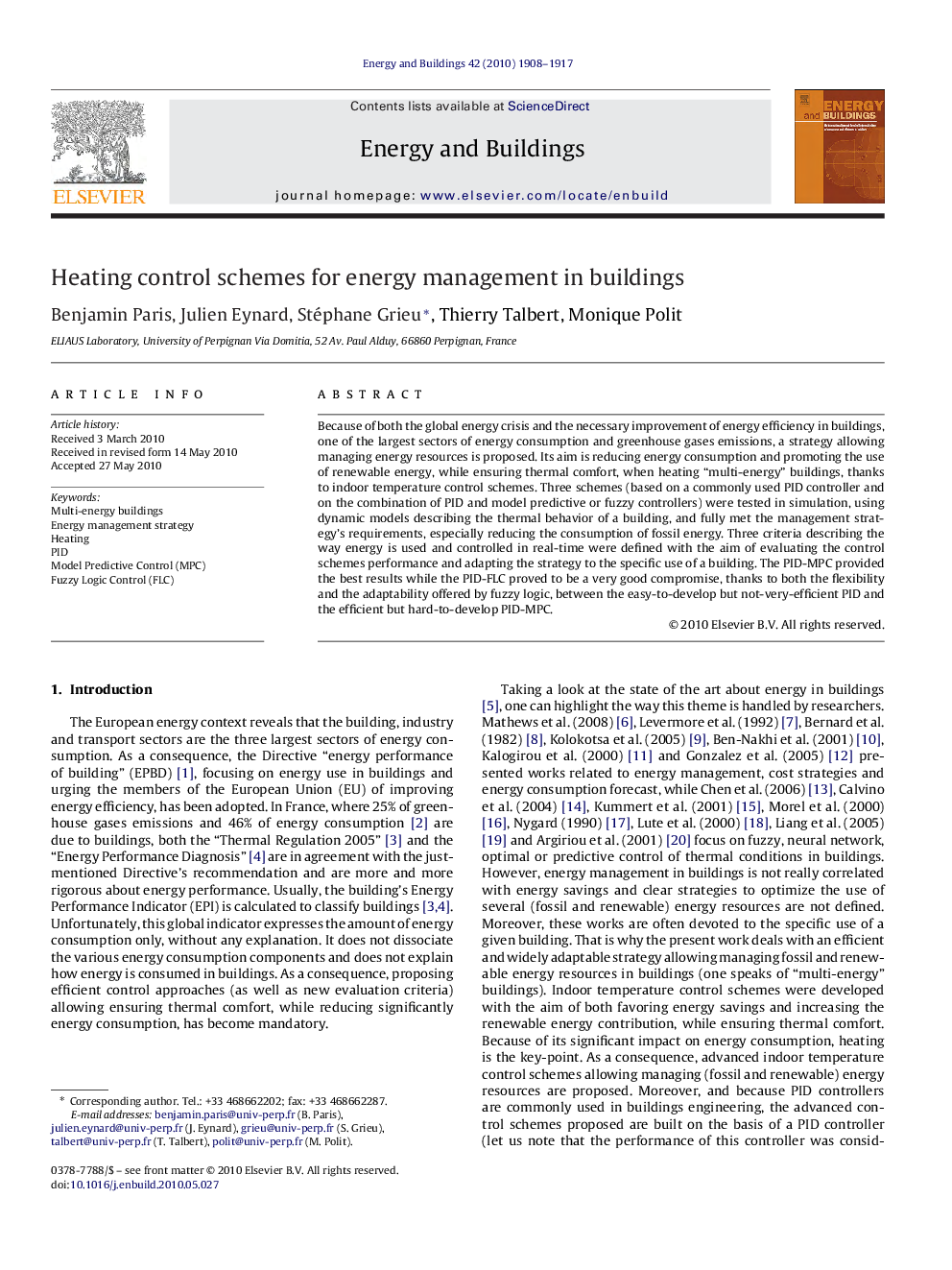| Article ID | Journal | Published Year | Pages | File Type |
|---|---|---|---|---|
| 264616 | Energy and Buildings | 2010 | 10 Pages |
Because of both the global energy crisis and the necessary improvement of energy efficiency in buildings, one of the largest sectors of energy consumption and greenhouse gases emissions, a strategy allowing managing energy resources is proposed. Its aim is reducing energy consumption and promoting the use of renewable energy, while ensuring thermal comfort, when heating “multi-energy” buildings, thanks to indoor temperature control schemes. Three schemes (based on a commonly used PID controller and on the combination of PID and model predictive or fuzzy controllers) were tested in simulation, using dynamic models describing the thermal behavior of a building, and fully met the management strategy's requirements, especially reducing the consumption of fossil energy. Three criteria describing the way energy is used and controlled in real-time were defined with the aim of evaluating the control schemes performance and adapting the strategy to the specific use of a building. The PID-MPC provided the best results while the PID-FLC proved to be a very good compromise, thanks to both the flexibility and the adaptability offered by fuzzy logic, between the easy-to-develop but not-very-efficient PID and the efficient but hard-to-develop PID-MPC.
